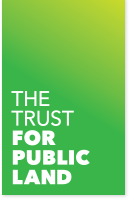
We are excited to share with you City parks, clean water: Making great places using green infrastructure, the first report exploring the intersection of green infrastructure and parks.
Using case studies, data tables, and interviews with national experts, the report explores both new and existing parks, including in-depth studies of water-smart parks in Atlanta, Georgia; Birmingham, Alabama; Cambridge, Massachusetts; New York; and Shoreline, Washington.
Parks have been capturing and cleaning stormwater from the beginning, often unintentionally through vegetation and porous soils. But these spaces now offer win-win situations for cities to manage stormwater runoff while also meeting residents’ recreation needs.
Green infrastructure is not a simple, one-size-fits-all solution. It needs to be carefully designed, implemented, and maintained in order to protect the parks’ resources and at the same time manage stormwater over the long term. Using parks as infrastructure may be a time-honored tradition, but it also requires new technologies and new practices. That is the reality that City parks, clean water explores.
This report is part of The Trust for Public Land’s work to support and improve the park systems of America’s cities, providing valuable practical knowledge for those working to strengthen their communities through parks.
What’s Inside
- The problem
- The different goals
- The different solutions and how they actually work
- Design considerations for success
- Staying involved
- Negotiating between different uses of a park
- Who pays, who benefits, and how are costs accounted?
- Acknowledgements
Source: The Trust for Public Land – City Parks, Clean Water | The Trust for Public Land





